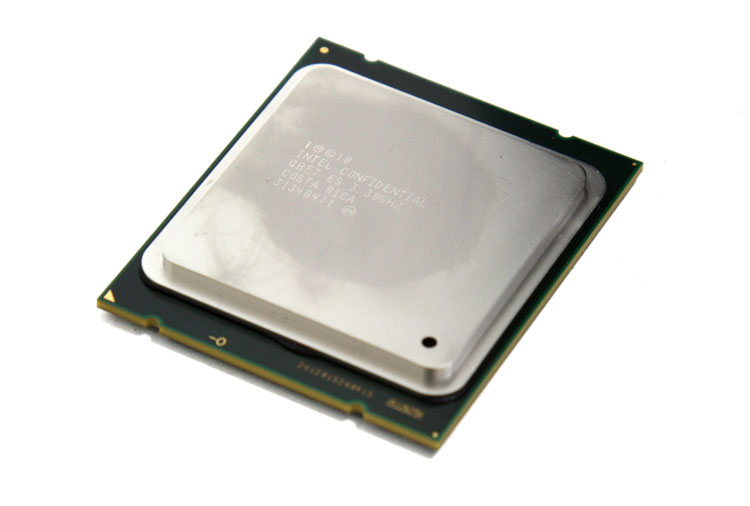The Intel X79 chipset and Sandy Bridge E processors
The Intel X79 chipset and Sandy Bridge E processors
We'll first start off with a bit of an explanation about the new processors that ignited the X79 motherboard chipset. If you read the launch review then you know it's all about Sandy Bridge-E, the all new "enhanced" slash "enthusiast" version of what pretty much in a nutshell is the Sandy Bridge (Core i7 2600K) architecture, yet with some new features added and some others stripped away.
Simply put, you take all the good ingredients from Sandy Bridge, preferably add two cores, a slightly increased L3 cache and add a pinch of quad-channel memory. There is one exception to the rule, one Core i7 Sandy Bridge-E CPU that will remain a quad-core processor.
Intel has announced three Sandy Bridge-E class processors, namely the Core i7-3960X, the Core i7-3930K, and the Core i7-3820. Each will have different clock frequencies and a slightly changed L3 cache. The Core i7-3820 is a quad core processor, the other two are six-core processors.
Below, an overview of the main specs.
| Processor |
Base Clock |
Max. Turbo Clock |
Cores / Threads |
L1 Cache | L2 Cache | L3 Cache | Memory | Interface | TDP |
|---|---|---|---|---|---|---|---|---|---|
| Core i7-3960X | 3.3 GHz | 3.9 GHz | 6/12 | 64KB x6 | 256KB x6 | 15 MB | Quad-channel DDR3-1600 |
LGA 2011 | 130 W |
| Core i7-3930K | 3.2 GHz | 3.8 GHz | 6/12 | 64KB x6 | 256KB x6 | 12 MB | Quad-channel DDR3-1600 |
LGA 2011 | 130 W |
| Core i7-3820 | 3.6 GHz | 3.9 GHz | 4/8 | 64KB x4 | 256KB x4 | 10 MB | Quad-channel DDR3-1600 |
LGA 2011 | 130 W |
| Core i7-2600K | 3.4 GHz | 3.8 GHz | 4/8 | 64KB x4 | 256KB x4 | 8 MB | Dual-channel DDR3-1333 |
LGA 1155 | 95 W |
What's interesting from a naming point of view is that Intel chooses three different suffixes for the processors, we have an X model, a K model and a 'normal' model. A little confusing, but it does make some sense:
- The X suffix is Intels Extreme Edition processors, this means the top-of-the-line unlocked processors.
- The K suffix denotes a slightly lower end processor yet with its multiplier unlocked.
- And the normal editions are pretty much mainstream without any enthusiast grade overclock options, meaning a locked multiplier.
Cache wise the L1 and L2 caches are 100% similar to Sandy Bridge:
- 32KB data and a 32KB instruction L1 cache per physical core.
- 256KB L2 cache per core.
The L3 cache differs though, Sandy Bridge has one 2 MB slice of L3 cache per core, that's 8 MB for say the 2600K processor. The Core i7-3960X used in this article has 15MB of L3 cache, meaning 2.5 MB per core (it's a single block of cache as it's shared).
L3 cache then, the six-core Core i7-3930K processor will get 12 MB (= 2 MB per core) and the Core i7-3820 will get 2 MB per core as well. So just one SKU has a 2.5 MB per core Level 3 (shared cache).
All three processors will have a 130W TDP, quite similar to the original six-core Gulftown based Core i7 980X. We had hoped to see a lower TDP with the original Sandy Bridge processors being so energy efficient.

